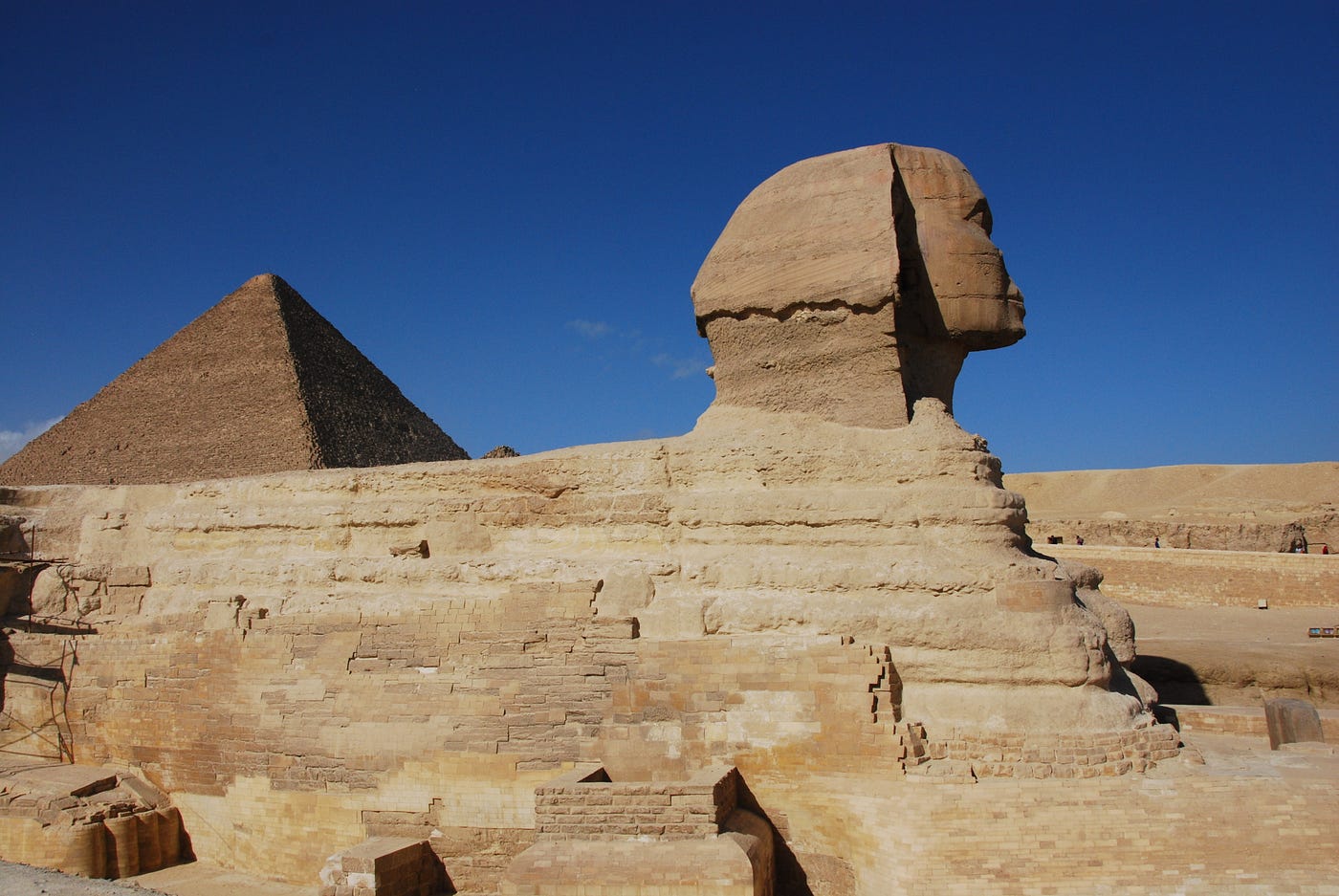The Predecessors of Ancient Egyptian Sphinxes: Unraveling Their Natural Origins

The Great Sphinx of Giza is speculated to have been naturally carved by desert winds before human intervention. This theory is based on the surprising similarities between desert landforms known as yardangs and seated lions, suggesting that a lion-shaped yardang could have been the base for carving the Sphinx by ancient Egyptians. The seemingly simple but unique structure of these rock formations is discussed in the November issue of Physical Review Fluids. A team of scientists was able to create small, Sphinx-like yardangs from clay in a water tunnel by replicating the conditions under which yardangs form the wind's direction and a blend of erodible and resistant material.
Elena Favaro, a geomorphologist from the Open University in Milton Keynes, England, who was not involved in the study, pointed out that while the process of yardang formation is not entirely clear, these formations are prominent in desert regions where wind erosion creates extended, streamlined ridges directed towards the ongoing winds. She praised the study, terming it as an innovative approach to understanding yardang formation.
Determined to understand the creation of Sphinx-like yardangs, applied mathematician Leif Ristroph from New York University, and his team decided to study this phenomenon in a lab setting. They ran experiments that replicated years of erosion within a few hours using a water tunnel, traditionally used to study fluid flow around rigid objects like aircraft wings.
Ristroph and his team conducted numerous trials using the water tunnel, starting each experiment with a rigid clay paste glob, embedded with hard plastic bits to simulate natural rock formations, and allowing it to erode under steady water "wind". The result was a close resemblance to Sphinx-like mini-yardangs, irrespective of the initial shape of the glob or the placement of plastic bits.
To visualize the flow around mini-Sphinx shapes carved from clay, the scientists 3D-printed replicas of the shapes and coated them with fluorescent dye-laden clay. But as the clay sphinxes dissolved quickly, the researchers had to be innovative and scanned the mini-yardangs, 3D-printing reusable plastic models. Before each experiment, they coated the plastic models in a thin layer of fluorescent-dyed clay.
The water tunnel's glowing clay allowed the researchers to trace the whirlpool-like currents surrounding the blob, revealing patterns that can potentially be mathematically modeled. These included a turbulent "mane" of whirls emanating from the Sphinx's head magnetizing a sloping, feline backbone. Ristroph hopes that further research could explore the potential significance of these small water blobs in understanding the wind erosion effects on landscape-sized rocks.




